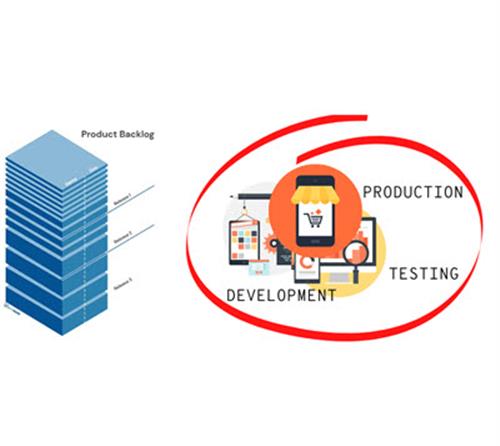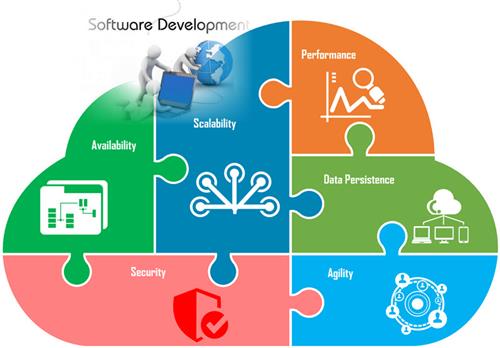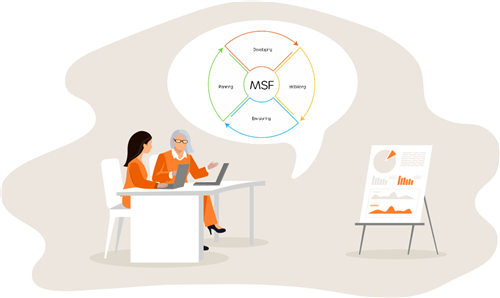Easily confused terms: Discrete effort, Apportioned effort and Level of effort
Last updated: March 04, 2024 Read in fullscreen view
- 01 Aug 2024
 The Standish Group report 83.9% of IT projects partially or completely fail 160/1785
The Standish Group report 83.9% of IT projects partially or completely fail 160/1785 - 13 Apr 2024
 Lessons on Teamwork and Leadership from Chinese story book "Journey to the West" 44/953
Lessons on Teamwork and Leadership from Chinese story book "Journey to the West" 44/953 - 02 Nov 2021
 What is Terms of Reference (ToR)? 24/1470
What is Terms of Reference (ToR)? 24/1470 - 03 Apr 2022
 Microsoft Solutions Framework (MSF) 14/1162
Microsoft Solutions Framework (MSF) 14/1162 - 18 Dec 2023
 The Cone of Uncertainty in Scrum & Requirement Definition 8/646
The Cone of Uncertainty in Scrum & Requirement Definition 8/646 - 18 Oct 2021
 Key Elements to Ramping Up a Large Team 7/1115
Key Elements to Ramping Up a Large Team 7/1115 - 20 Jul 2022
 Software Myths and Realities 4/801
Software Myths and Realities 4/801 - 07 Jul 2022
 Managing Project Execution Terms 3/379
Managing Project Execution Terms 3/379 - 10 Apr 2024
 The Parking Lot Method: Unlocking a Simple Secret to Supercharge Your Productivity 3/403
The Parking Lot Method: Unlocking a Simple Secret to Supercharge Your Productivity 3/403 - 24 Nov 2023
 The project management paradox: Achieving MORE by doing LESS 3/194
The project management paradox: Achieving MORE by doing LESS 3/194 - 02 May 2022
 What Is RAID in Project Management? (With Pros and Cons) 2/735
What Is RAID in Project Management? (With Pros and Cons) 2/735 - 05 Jun 2023
 Fractional, Part-Time (virtual) or Interim CTO: Who Will Cover Your Business Needs? 2/109
Fractional, Part-Time (virtual) or Interim CTO: Who Will Cover Your Business Needs? 2/109 - 26 Sep 2024
 Successful Project Management Techniques You Need to Look Out For 2/368
Successful Project Management Techniques You Need to Look Out For 2/368 - 14 Jun 2022
 Example and Excel template of a RACI chart in Software Development 2/708
Example and Excel template of a RACI chart in Software Development 2/708 - 12 Aug 2022
 What is End-to-end project management? 2/382
What is End-to-end project management? 2/382 - 15 May 2022
 20 Common Mistakes Made by New or Inexperienced Project Managers 2/247
20 Common Mistakes Made by New or Inexperienced Project Managers 2/247 - 22 May 2022
 What are common mistakes that new or inexperienced managers make? 1/243
What are common mistakes that new or inexperienced managers make? 1/243 - 27 Jan 2020
 Should a project manager push developers to work more hours due to mistakes of manager schedule setting? 1/412
Should a project manager push developers to work more hours due to mistakes of manager schedule setting? 1/412 - 02 Jan 2024
 What is User Provisioning & Deprovisioning? 1/483
What is User Provisioning & Deprovisioning? 1/483 - 01 Mar 2024
 10 Project Management Myths 1/120
10 Project Management Myths 1/120 - 07 Dec 2023
 12 project management myths to avoid 1/169
12 project management myths to avoid 1/169 - 30 Nov 2023
 Project Managers, Focus on Outcomes — Not Deliverables /143
Project Managers, Focus on Outcomes — Not Deliverables /143 - 02 Nov 2022
 Difference between Change Management and Project Management /216
Difference between Change Management and Project Management /216 - 01 Aug 2022
 Is planning "set it and forget it" or "set it and check it"? /264
Is planning "set it and forget it" or "set it and check it"? /264 - 23 Jun 2024
 Best Practices for Managing Project Escalations /184
Best Practices for Managing Project Escalations /184 - 21 Jun 2024
 Dead Horses and the Escalation of Commitment /124
Dead Horses and the Escalation of Commitment /124 - 02 Jun 2024
 Reviving Ancient Wisdom: The Spiritual Side of Project Management /204
Reviving Ancient Wisdom: The Spiritual Side of Project Management /204 - 17 Oct 2021
 Does Fast Tracking increase project cost? /350
Does Fast Tracking increase project cost? /350 - 13 Jan 2020
 Quiz: Test your understanding project cost management /568
Quiz: Test your understanding project cost management /568 - 02 Dec 2021
 3 Ways to Avoid Scope Creep in IT Consulting /192
3 Ways to Avoid Scope Creep in IT Consulting /192 - 06 Jun 2022
 Change Management at the Project Level /293
Change Management at the Project Level /293 - 09 May 2022
 Build one to throw away vs Second-system effect: What are differences? /299
Build one to throw away vs Second-system effect: What are differences? /299 - 10 May 2022
 Levels of Teamwork /180
Levels of Teamwork /180 - 03 Jan 2023
 Organizing your agile teams? Think about M.A.T (Mastery, Autonomy, Purpose) /333
Organizing your agile teams? Think about M.A.T (Mastery, Autonomy, Purpose) /333
Discrete Effort, Apportioned Effort and Level of Effort (LOE) are the 3 types of activities used in Earned Value Management (EVM) to measure work performance.
Discrete Effort
Discrete effort is an activity that can be linked to a specific WBS output, so discrete effort can be planned and regulated and that yields a specific output (product, module, deliverable...).
Characteristics:
- Physical, tangle end product or deliverable.
- Preferred category of work because objective.
Some examples of discrete effort include building a specific piece of software, creating a product guideline, analyzing/visualizing data etc.
Apportioned Effort
Apportioned Effort is work that cannot be directly associated to a WBS component or a project deliverable. The term 'apportion' means to divide or share (e.g. measure as a factor, e.g., 10% of discrete tasks). Apportioned Effort has a direct and supportive relationship to the Discrete Effort.
Characteristics:
- Intangible
- Dependent on discrete tasks and other work.
- Measure as a factor, e.g., 10% of discrete tasks.
The existence of apportioned effort relies specifically and directly on the performance of other efforts. Examples of Apportioned Effort include Quality Assurance (QA), Quality Control (QC) and inspection activities. That quality assurance division is specifically and wholly reliant on the performance of the development team as a whole.
Level Of Effort (LOE)
Level of Effort is a support-type project activity that does not produce tangible outcomes that can be measured objectively.
Characteristics:
- No more than 20% of the budget as LOE.
- Has no specific product or deliverable.
- Measure by passage of the time.
Examples of LOE include planning, project management, partner management, coordination, tool/artifact creation, seller or customer liaison, project cost accounting, maintenance of equipment and administrative work (incl. paperwork) to support projects.


































 Link copied!
Link copied!
 Recently Updated News
Recently Updated News